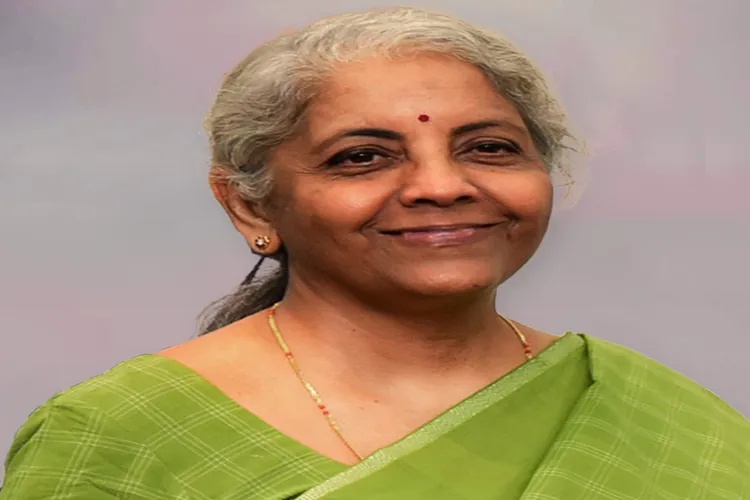
Unified Pension Scheme: A Game Changer for Central Government Employees
The Indian government has made a strategic move by integrating the Unified Pension Scheme (UPS) into the National Pension System (NPS), offering tax advantages to central government employees. This decision aims to enhance the financial appeal of UPS, which was introduced earlier this year as an alternative pension option for new recruits joining central government services from April 1, 2025. By aligning UPS with the existing tax benefits of NPS, the government is creating a more attractive retirement framework for its workforce. The Pension Fund Regulatory and Development Authority (PFRDA) had already laid the regulatory groundwork for UPS in March 2025, ensuring a smooth transition for employees. This update not only strengthens retirement security but also provides a level playing field for both existing NPS members and new recruits opting for UPS. The Finance Ministry emphasized that this move reflects the government’s commitment to transparent and tax-efficient pension solutions, ensuring long-term financial stability for public sector employees.
Tax Benefits and Financial Incentives Under UPS
The recent policy shift has integrated the Unified Pension Scheme (UPS) into the National Pension System (NPS), offering tax advantages to central government employees. This decision ensures that UPS participants enjoy the same tax deductions and incentives as NPS contributors, including contributions to the pension fund and other tax-saving benefits. The UPS model provides a guaranteed pension, with the government covering 18.5% of the employee’s basic salary and dearness allowance, while the employee contributes 10%. This structure replaces the traditional NPS for new recruits and allows existing NPS members to transition seamlessly. The financial incentives under UPS are designed to make retirement planning more predictable, offering employees a stable income stream post-retirement. By aligning UPS with NPS’s tax framework, the government is addressing concerns about the financial viability of pension schemes, ensuring that employees receive optimal benefits without compromising on fiscal responsibility.
Transparent Framework for Retirement Security
The Unified Pension Scheme (UPS) represents a significant step toward creating a transparent and flexible retirement framework for central government employees. Introduced as an alternative to the National Pension System (NPS), UPS aims to provide a more predictable and secure income for retirees. The scheme’s structure, which includes a guaranteed pension and clear contribution rates, addresses the complexities of managing retirement savings under the NPS. The government’s decision to extend tax benefits to UPS participants underscores its commitment to enhancing retirement security through simplified and efficient pension models. This approach not only benefits new recruits but also allows existing NPS members to switch to UPS without losing their tax advantages. The Pension Fund Regulatory and Development Authority (PFRDA) played a crucial role in establishing the regulatory framework for UPS, ensuring that the transition to this new scheme is both smooth and equitable for all employees.
Government’s Vision for Pension Reforms
The Finance Ministry’s announcement highlights the government’s broader vision for pension reforms aimed at ensuring long-term financial stability for public sector employees. By integrating UPS into the NPS tax framework, the government is addressing gaps in the existing pension system while promoting fiscal responsibility. The Unified Pension Scheme’s guaranteed pension model provides a sense of security that many employees find lacking in the more flexible NPS structure. This move also reflects the government’s recognition of the need for a balanced approach to retirement planning, combining the benefits of tax efficiency with the predictability of a fixed pension. The decision to offer tax benefits to UPS participants is a strategic effort to attract more employees to this scheme, ensuring that the retirement benefits are both comprehensive and sustainable. As part of this reform, the government is also focusing on transparency, ensuring that employees are well-informed about their pension options and the financial implications of their choices.
Impact on Central Government Employees
The integration of the Unified Pension Scheme (UPS) into the National Pension System (NPS) is set to have a profound impact on the financial planning of central government employees. By aligning UPS with NPS’s tax benefits, the government is providing employees with a more attractive retirement option that balances flexibility with security. The guaranteed pension under UPS offers a level of predictability that many employees find reassuring, especially in an environment where financial uncertainties are common. This reform also allows existing NPS members to transition to UPS without losing their tax advantages, ensuring continuity in their retirement savings. The government’s emphasis on transparency and tax efficiency in the UPS model reflects a commitment to addressing the diverse needs of public sector employees. As the UPS becomes more accessible, it is expected to play a significant role in shaping the future of pension planning for central government employees, offering them a reliable income stream in their post-retirement years.



